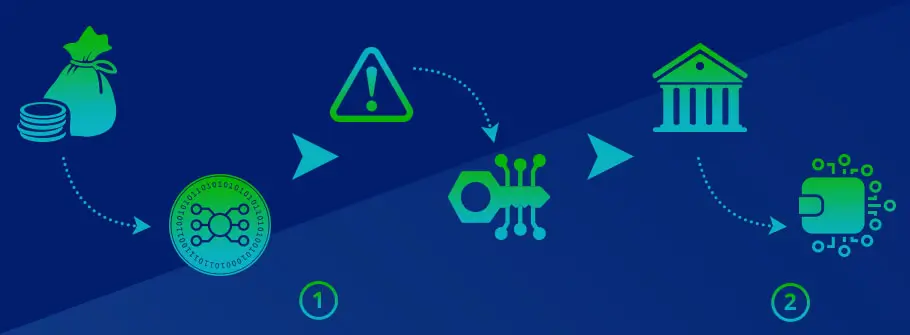Invest in Cryptocurrencies
Video: Invest in Cryptocurrencies
Ahmet Dagli
Always wanted to invest in cryptocurrencies but don’t know where to start? Follow our guide, part of our series on investing for beginners. Step by step we will cover:
- Why to invest in cryptocurrencies?
- What is blockchain?
- What is a cryptocurrency?
- Types of cryptocurrencies
- What is staking?
- Best cryptocurrency to invest in
- Investing in cryptocurrencies
- Building your digital assets portfolio with VanEck
Okay, let’s get started.
Why to invest in cryptocurrencies?
Cryptocurrencies promise a new way of arriving at a global consensus; a math-based model that can guarantee scarcity while remaining open to anyone with an internet connection. Bitcoin, the best known, is regarded as a store of value in an age of uncertainty, a kind of digital gold. Like gold, its supply is limited. There will never be more than 21 million Bitcoins and they will be issued at a known rate. That contrasts with fiat currencies, where an increasing money supply can stoke inflation, devaluing the currency.
The value of the newer cryptocurrencies – such as Ethereum, Tron and Solana – are linked to their rapid growth as platforms for smart contracts.
Broadly speaking, investing in cryptocurrencies offer diversification from traditional asset classes, as their prices tend to move independently.
However, cryptocurrency prices are volatile, subject to rapid price swings. Due to this and to the other risks they are linked to, they should only form a limited part of an investor’s overall portfolio.
What is blockchain?
Invented to support Bitcoin, the blockchain technology behind this virtual currency is a disruptive force to many existing business models. An open, secure distributed ledger that records transactions between two parties efficiently and permanently, blockchain is beginning to be used across a wide range of sectors, from trade finance to law.
What is a cryptocurrency?

Cryptocurrencies are a digital means of exchange that use cryptography for security (1). They are represented as tokens or ledger entries on a blockchain network, effectively used to meter the network’s capacity for transactions (2).
Confusingly, the names of cryptocurrency networks are used interchangeably with the tokens that technically speaking are the currencies (3). Three leading examples of cryptocurrencies are:
- Bitcoin (network) has BTC as token.
- Ethereum (network) has Ether as token.
- Solana (network) has SOL as token.
The demand for any specific cryptocurrency increases the more its corresponding blockchain network is used. Greater demand for the token might well increase its price.
Digital currencies
Cryptocurrencies are types of digital currency. However, digital currencies also include stable coins, which are less volatile as they are linked to the value of an existing currency or commodity. For example, Tether is an independent stable coin which attempts a US dollar peg. Indeed, many countries’ central banks are looking into launching stable coins. Purchasing stable coins can be considered as a way to invest in cryptocurrencies oriented at minimizing the associated volatility.
Types of cryptocurrencies
While the cryptocurrency universe is evolving quickly, VanEck has identified the following broad classifications:
- Store of value: Designed to hold or increase purchasing power over time. For example, Bitcoin.
- Smart contract platform: Blockchain protocol designed to host a variety of self-developed and third party dApps. For example, Ethereum, Solana, TRON, Polkadot.
- Infrastructure application: A decentralized computer program designed to perform specific tasks. For example, Polygon.
- Stable coins: Digital currencies that attempt to peg to a reasonably stable asset such as a currency or commodity. For example Tether.
- Exchange: Tokens owned and operated by a centralized cryptocurrency exchange. For example BNB (Binance Exchange).
- Payments: Digital monies operated by a distributed network. For example Dogecoin.
- DeFi: Financial services built on top of distributed networks with no central intermediaries. For example Uniswap.
- Metaverse: A currency used to reward users for content, games, gambling or social media. For example, Axie Infinity.
What is staking?
Staking cryptocurrencies is a process that involves committing one’s crypto assets to a blockchain network for a certain amount of time, in order to help the network confirm transactions. Staking can be a good way to use your crypto assets to generate an income, as some cryptocurrencies pay high rates of interest for such a commitment.
Best cryptocurrency to invest in
The choice of which currency to invest in is up to the individual investor. Obviously, it will change at different points in time and near-term price volatility often depends on shifts in market share or momentum.
Bitcoin is the starting point for many investors because its use case is simple, its network is among the most decentralized, and the long-term price momentum has been strong. Many professional investors, large corporations and even a sovereign nation (El Salvador) have invested in this original cryptocurrency.
However, it is often wise to diversify or spread your bets. While Bitcoin was the first cryptocurrency, newer cryptocurrencies offer different use cases. Indeed, second or third generation cryptocurrencies like Ethereum and Solana are backed by more advanced technology, which may boost demand for network capacity and their tokens.
It is difficult to predict which will be the dominant cryptocurrencies in 20 years’ time. For that reason, it may be wise to invest in a basket of cryptocurrencies. Investors should always consider risks when they invest in cryptocurrencies.
Investing in cryptocurrencies

Investing in cryptocurrencies directly is fraught with difficulty and risk. You need to hold a private key to a cryptocurrency wallet. But there are many cases of keys being lost if held directly, or hacked if held by an exchange (1).
It’s far simpler and safer to invest in cryptocurrencies through an exchange-traded note (ETN). The cryptocurrencies backing these ETNs are stored by regulated, professional custodians (2).
Building your digital assets portfolio with VanEck
VanEck offers several Crypto ETNs that help you build a diverse portfolio investing in crypto assets. You can have direct access to a wide range of cryptocurrencies, easily tradeable and fully invested in their underlying cryptocurrency. Explore our range of crypto assets and start building your crypto portfolio:
Cryptocurrencies
Cryptocurrencies
Cryptocurrencies
Cryptocurrencies
Cryptocurrencies
Cryptocurrencies
- Phone: +41 (0)44 562 40 65
- Email: EMEAinfo@vaneck.com